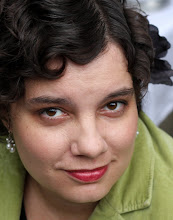
by Scott Belsky
Mr. Belsky, of www.behance.net, does a great job explaining to artists, photographers, and writers how to go about organizing their work flows to maximize their output. I read the book over the last few weeks and have already seen the results. My boss mentioned I was getting a lot of stuff done and asked if I felt overwhelmed with work. Cute.
The book is organized broadly into three areas: Organization and Execution, Community, and Leadership Capability.
So his organizational system goes something like this:
Get a notebook or note cards, whichever you chose, but make sure that it is on paper you like. (You are creative and so find fine paper to be important, so much so that you have a lot of it lying around and don’t really know what to do with all of it.) In the alternative, Behance sells books that are set up to work with the action method.
On the cards/in the book, set up a page for each project you are working on. For each project, write out action steps to take to complete the project and the date that you wrote down the step. The idea is to help you stay on task. Then set up a section for backburner projects that you don’t want to forget, but are not yet working on. These projects might eventually move to the front burner.
I have found that outside of work I can only have two other projects, max, to spend my time on. That said, I set up my system for both work and home. My projects currently are:
* memoir
* photography business
* screenplay (halfway on the backburner)
* personal to do's (dr appointments, etc.)
* section 2 of report
* section 4 of report
* backburner projects/ideas (my fiction book is on this list)
I have started carrying these cards with me everywhere, so I can jot down action steps to do, new projects for the back burner, or other stuff.
Mr. Belsky makes the point that people take a lot of notes, and then files them away. He wants you to stop saving all of these notes and other items. Filing everything away is taking too much time. In my case, I end up with piles of stuff to organize all of the time. Instead of working on my projects, I often decide to get organized first, letting my projects further languish. So, I bought a box with a lid, and put everything from my desk into the box. Now, I just sort through the box once a month while watching crime shows.
The author also spends a lot of time explaining how projects don’t get done without help. Without the support of your community, you are unlikely to get very far with your creative endeavors. He lists out a few websites to find like-minded people.
Finally, he talks about leadership and the qualities of a good leader. This chapter and the others are peppered with stories that have had success in their lives from their personal projects.
Overall, I really enjoyed this book. I think he makes some excellent points about how to get your work done when you are your own boss. The book does slow down a bit at the end, but I suppose that always happens with these kinds of books. On a strange note, the book jacket feels funny. I mean the paper itself.




No comments:
Post a Comment